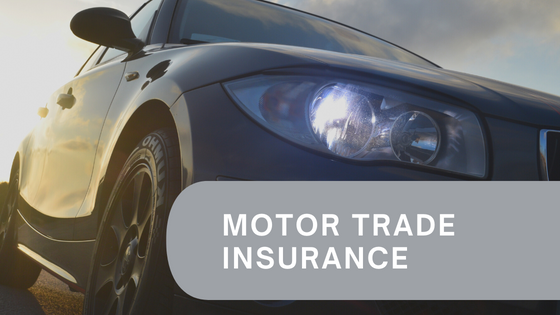Hidden Expenses of Insufficient Insurance: Motor Trade Insurance Insights
When it comes to running a motor trade business, insurance is often among the most important although neglected components. Many operators focus on reducing costs down and often undervalue the significance of sufficient coverage, which may cause likely catastrophic financial consequences. The reality is that not properly insuring your enterprise can open you to unseen expenses that greatly outweigh the savings potential from lower insurance costs. Grasping how much of motor trade coverage you should have can aid guide this complicated landscape.
The motor trade market is diverse, covering everything from auto dealerships to service centers. Every sector has its unique challenges and coverage requirements. Determining the correct level of coverage is not just a matter of regulation; it is crucial for ensuring the safety of your enterprise's future. In this write-up, we will discuss the critical factors to take into account when assessing the appropriate amount of vehicle coverage you require, to guarantee you are completely covered against unexpected occurrences.
Comprehending Motor Commerce Protection
Motor trade coverage is a specific form of insurance that serves entities involved in the commercial activities of automobiles. This includes operations such as purchasing, dispensing, restoring, or servicing automobiles, two-wheelers, and other motor vehicles. Since operations in the motor trade deal with multiple vehicles and have various operational challenges, having the appropriate insurance is vital for economic security against anticipated liabilities and losses.
One key element to consider is the various levels of cover available. Motor trade coverage can vary from policies that cover road risk only, which insure automobiles while they are used on open streets, to full policies that provide cover for grounds, tools, and items being transported. The form and degree of insurance a company needs often hinges on the type of its business model and the amount of vehicles it manages concurrently.
Insufficiently insuring this field can lead to substantial monetary impacts. If a business does not have adequate protection, it may realize itself dealing with substantial financial burdens from collisions, theft, or destruction to vehicles. Therefore, analyzing your functional needs and understanding the intricacies of motor trade coverage is essential to making sure that your firm is well-protected and can run without unnecessary economic pressure.
Effects of Underinsuring
Underinsuring your motor trade business can lead to significant financial repercussions. When your insurance falls short, you face having to pay for costs that should normally be paid for by your insurance provider. In how much motor trade insurance cover do you need? of a claim, whether it be for vehicle damage or liability issues, insufficient coverage can force you paying out-of-pocket expenses that may greatly surpass your initial savings from lower premiums.
Additionally, underinsurance can threaten your business operations. If an accident occurs and your insurance does not adequately cover the claims, your business may be compelled to halt operations while you deal with the unexpected financial strain. This disruption not only affects your cash flow but can also harm your standing with customers and suppliers, ultimately resulting in a loss of trust and potential revenue.
Additionally, the emotional toll of underinsuring can be high. The stress of navigating litigation or handling hefty repair bills without sufficient support can take a personal toll. The peace of mind that comes with complete motor trade insurance is priceless, as it allows you to focus on growing your business instead of worrying about unforeseen incidents that could have been avoided with adequate coverage.

Key Considerations for Sufficient Insurance
When evaluating the level of motor trade insurance you should obtain, think about the specific activities of your company. Whether you function as a car dealer, auto technician, or repair business, the dangers associated with each position vary significantly. Evaluating factors like the number of vehicles in your ownership, the worth of your stock, and the offerings will aid in understanding the level of insurance needed to safeguard your resources and financial responsibilities.
Another key factor is adherence with regulatory mandates. Verify that your policy meets the minimum insurance mandates applicable in your area. Additionally, consider market norms and best practices to identify any shortcomings in your protection. Networking with industry peers or professional organizations can give information into normal protection standards that others within your industry find sufficient.
In conclusion, consider the potential financial impact of insurance claims on your enterprise. Reports indicate that the expenses related to mishaps, larceny, or losses can overwhelm the value of underinsured coverage. Therefore, assessing the most adverse outcomes and aligning your insurance coverage limits properly becomes vital. A detailed risk assessment can direct you in choosing a coverage plan that not only meets legal obligations but also shields your business against substantial damages.